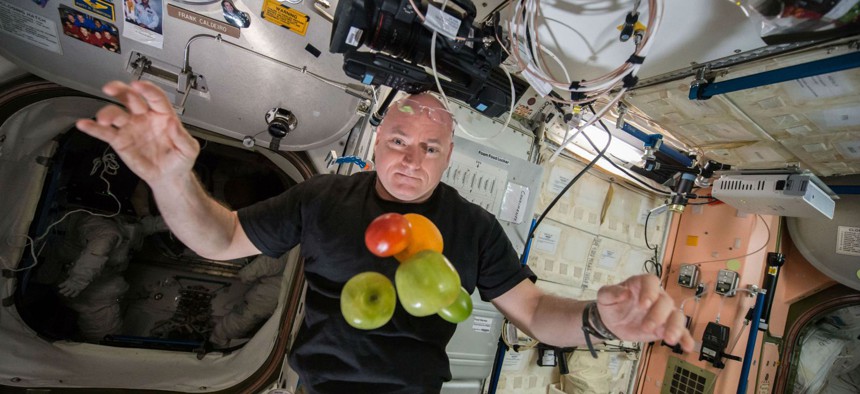NASA Getting a New Cable TV Channel

Astronaut Scott Kelly aboard the International Space Station NASA
You'll soon be able to watch astronauts aboard the ISS in 4K UHD video.
Your odds of becoming an astronaut today are slim, no matter where you are in the world. Astronaut selection rates from the world’s public and private space agencies range from 4% down to a tiny fraction of a percent. So if you’re reading this, chances are you’ll never go to outer space (unless we start colonizing the solar system much faster than expected).
But this might be the next best thing.
On Nov. 1, NASA will launch a new TV channel that broadcasts exclusively in gorgeous 4K UHD video. Like NASA’s current channel (NASA TV), the new channel—called NASA TV UHD—will be streamed online for free worldwide, but will be offered via a cable TV subscription only in North America.
“As NASA reaches new heights and reveals the unknown, the NASA TV UHD channel can bring that journey to life in every home,” said Peter Alexander of Harmonic, a video delivery company that NASA is partnering with. That “journey” will include video shot by astronauts aboard the International Space Station (ISS), as well as remastered footage from historic missions.
NASA has been experimenting with 4K video for awhile now. On the ISS, astronauts are already using 4K cameras to film everything from growing the first-ever space lettuce (video) to performing mesmerizing fluid behavior experiments.
(If you’re watching on YouTube, make sure to change the video’s playback settings to the 4K option.)
Since it’s in the public domain, cable providers can carry the channel at their own discretion. That said, many of the major American cable providers, like Comcast and Time Warner Cable, don’t include it in their standard packages. (Satellite providers DirecTV and Dish Network do, however.)
Broadcasting in 4k means that the channel delivers 2160p resolution—four times the definition of 1080p, which is what most standard HDTVs can display. If you’re a little confused about what exactly 4K video is, here’s an excellent explanatory video from popular YouTube tech reviewer Marques Brownlee:
Part of the reason 4K video hasn’t truly taken off yet is because there isn’t much 4K content being made. If you just wanted the best TV set available, you could still buy a 4K TV set and watch what you’d normally watch in excellent quality. But to really take full advantage of a 4K display, you’d want to watch content that was designed specifically for that screen—and right now, there’s not a whole lot of that.
NASA, at least, is doing its part to change that.





